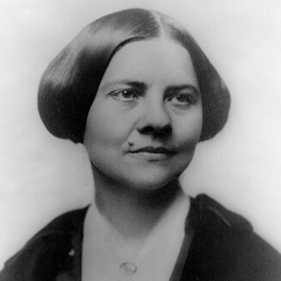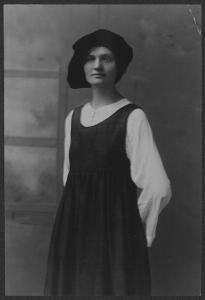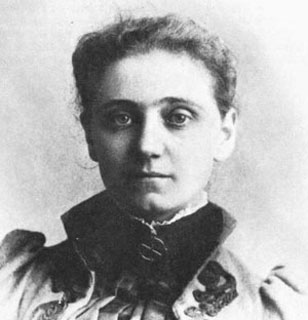Well, my Women’s History compatriots, this semester is at an end. I read through my entire blog this morning, from start to finish, and I’m wondering where the semester has gone. It’s probably camping out with Virginia Dare. In all seriousness, I was struck by how much I’ve learned this semester and how much history I have explored. This will be my 23rd post of the semester. That’s a lot of posting for 14 weeks.
Briefly, briefly, briefly, I would like to take a quick trip through five of my favorite posts of the semester (in publication order). See if you catch a theme!
#1. A Midwife’s Tale: The Life of Martha Ballard, Based on Her Diary, 1785-1812: I loved this book! Reading Martha’s story and learning about midwifery has continued to crop up in the strangest places ever since I wrote this post. I met a nurse who’s husband was a history buff, so I recommended the book as something they could read together. I was in my church one Sunday talking about natural remedies that I learned from this book (onions, what?!). I was in Short Story class comparing things that Martha did medically to some things that characters did in the stories. Martha Ballard gave me a lot of knowledge that I have continued to use. Also, Martha Ballard, Laurel Thatcher Ulrich, and my class discussion about this book all made me start questioning modern childbirth practices. My mom has a couple of hospital horror stories from her pregnancies that I don’t want to have. I don’t know if I’ll have kids yet or not, but if I do, I’m seriously considering the midwife route as opposed to the hospital environment. How you have your children is a huge decision, and without Martha Ballard, I never would have considered the options.
#2. Dear Women, Please Vote This Year: I like this post because it’s funny! Obviously, it would be impossible for Elizabeth Cady Stanton and Lucy Stone to have voted in the 2012 election; they have been dead for a century. But the thought game involved in writing this post — ah, that was fun. I also hope it was entertaining. Plus, writing this post gave me a chance to really dig into Obama’s 2012 platform and compare it to my knowledge of suffrage as a movement. For what specific reasons would the suffragists choose Obama? Those kinds of questions helped me to probe into Obama’s plans for the next four years. I’ve been an Obama supporter since 2007, but I was admittedly a little complacent this year in my politics-watching. By really digging into the platforms to write this post, I reaffirmed my connection to the Democratic party and was able to make an informed voting decision this year. I voted with the suffragists.
#3. “Can women have it all?” And other bull**** questions: My trip to the Connecticut Forum: Wow. What a trip. I think about what all of the panelists at the State of Women 2012 panel said frequently. It mulls around in the back of my brain, Gloria Steinem pursuing emotional freedom for men and women, Michelle Bernard shouting about transvaginal probes, Connie Schultz laughing at Rush Limbaugh, Ashley Judd and the god of her understanding. I said at the bottom of my event review that this trip to the Connecticut Forum felt like an inauguration. Without any question, it was. After the CT Forum, I began questioning and challenging everything in conversations with my friends and with others. The day I met my boyfriend’s father, we delved into a massive conversation about women’s liberation and high heels. He raised a valid question: Why do women in positions of authority wear high heels if they are painful and detrimental to your feet? In this conversation, I mentally tried to emulate Gloria Steinem and Ashley Judd at the Connecticut Forum. I wanted to possess a shred of Steinem’s wisdom and Judd’s ambassadorial tone. Finally, I thought, ah finally, I am a feminist.
#4. Sarah Hale, I Love You: I cannot possibly begin to describe how much I love Sarah Hale. She’s wonderful. She’s hilarious. And I can’t use the word female at all without thinking of Sarah. I specifically reword things to take female and male out of my conversations. Isn’t that crazy? I got so involved in the story of her campaign with Vassar that I saw all of the logic of her arguments and started to agree with her. Sarah Hale has made me phenomenally more conscious of the language that I use, both in formal writing and in everyday speech. That consciousness is important to develop, because if we continue to use inaccurate language to describe our problems, then we will never arrive at accurate solutions. Also, even by fighting to equalize terminology, Sarah Hale was laying the groundwork for feminist literary criticism. Without Sarah Hale, there is no Luce Irigaray. And since I love Irigaray, I love Hale.
#5. Full of Quivers After Reading Quiverfull: Quiverfull was a fascinating read. It was wonderful and horrifying and brilliant all at the same time. It felt like the capstone to my first semester pounding into women’s studies. Mostly, Quiverfull made me feel indignant that such obvious harm is being done to women right now. And in the Church. Having grown up in the evangelical Protestant world, I would like to believe that the safest place for people to be people is within the arms of the Christian church. But all too often, someone who runs to the church’s embrace soon finds themselves suffocating from its death squeeze grip of hierarchical terror. Say it with me now, what? In no way does that make sense to me, and yet for so many people, it is the reality. The churches presented in this book do harmful things to humanity, and it makes me angry. Reading Quiverfull was at times like a call to action. I live, function and operate within this world that so desperately needs feminism, and now I know, it is my duty and obligation to future generations to fight to make my world a safer place for humanity. That’s my quiverfull.
Farewell to you all, all of my lovely followers! Thank you for joining me in this four-month endeavor to learn some things about women in the U.S. throughout history. If you are interested in something different, come back next semester for my second women’s history experiment: Women in Christian History with Dr. Amy Davis Abdallah. Until then, this has been Women in American History with Professor Bethany Johnson, as retold by Maggie Felisberto. Hope you’ve enjoyed the ride!



















